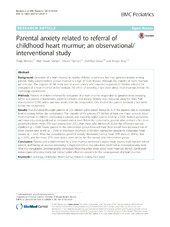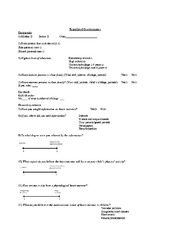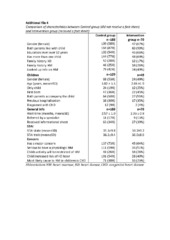| dc.description.abstract | Background: Detection of a heart murmur in healthy children is common, but may generate anxiety among parents. Many parents believe a heart murmur is a sign of heart disease, although the majority of heart murmurs are innocent. The purpose of this study was to assess anxiety and concerns in parents of children referred for evaluation of a heart murmur and to evaluate the effect of receiving a fact sheet about heart murmurs before the cardiologic consultation. Methods: Parents of children referred for evaluation of a heart murmur responded to questionnaires assessing family and patient characteristics, parental concerns and anxiety. Anxiety was measured using the State Trait Anxiety Index (STAI) before and two weeks after the consultation. One third of the parents received a fact sheet before the consultation. Results: Two hundred fifty-eight parents of 178 children participated. About 60 % of the parents had an increased level of anxiety before the consultation. The majority of the parents (71 %) had at least one major concern about heart murmurs in children, and having a concern was related to higher anxiety levels (p = 0.02). Anxious personality and lower education predicted an increased anxiety level. Before the consultation, parents who received a fact sheet presented a lower mean STAI state anxiety level (33.2) than those who did not (35.3), but the difference was not significant (p = 0.09). Fewer parents in the intervention group believed their child would have increased risk of heart disease later in life (p = 0.04) or that heart murmurs in children represents valvular-or congenital heart disease (p = 0.02). After the consultation, parental anxiety decreased from a mean STAI state of 34.9 to 30.6 (p < 0.01), and the mean STAI state scores were similar for the control and intervention group. Conclusion: Parents with a child referred for a heart murmur presented a higher mean anxiety level than pre-school parents, and having an anxious personality, a major concern or low education predicted an increased anxiety level. After the consultation, parental anxiety decreased. Receiving a fact sheet about heart murmurs did not significantly reduce parental anxiety levels, but had a modest effect on concerns for the consequences of a heart murmur. | en_US |





